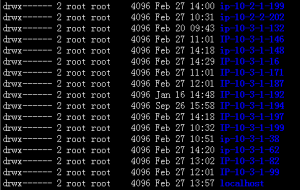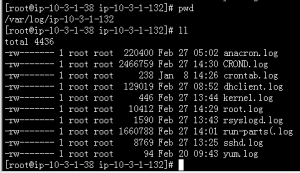通过rsyslog将日志记录到远程服务器上,并将所有的用户操作记录message,并且每台服务器的日志都保存到相应的目录中
1、在远程日志服务器上开启远程日志服务器(远程日志服务器ip为10.3.1.38)
vim /etc/rsyslog.conf$ModLoad imudp$UDPServerRun 514$template RemoteLogs,"/var/log/%HOSTNAME%/%PROGRAMNAME%.log" **.* ?RemoteLogs& ~ |
2、在远程日志服务器的客户端服务器上设置远程服务器的ip(客户端服务器ip为10.3.1.132)
设置服务器的主机名
hostname ip-10-3-1-132vim /etc/sysconfig/networkNETWORKING=yesHOSTNAME=ip-10-3-1-132NOZEROCONF=yes |
设置/etc/hosts文件(可以不操作),这里要注意ip-10-3-1-132 不能 写在行末尾,否则会出现在远程日志服务器上无法再/var/log 目录下生成对应服务器的日志目录 /var/log/ip-10-3-1-132 ,而会将10.3.1.132 这台服务器的日志都记录到/var/log/localhost 中
vim /etc/hosts127.0.0.1 ip-10-3-1-132 localhost localhost.localdomain localhost4 localhost4.localdomain4::1 localhost localhost.localdomain localhost6 localhost6.localdomain6 |
vim /etc/rsyslog.conf*.* @10.3.1.38:514 |
设置登录用户环境变量,将所有的用户操作记录message日志
vim /etc/bashrcexport PROMPT_COMMAND='{ msg=$(history 1 | { read x y; echo $y; });logger "[euid=$(whoami)] ":$(who am i):[`pwd`]"$msg"; }' |
重启rsyslog服务
/etc/init.d/rsyslog restart
结果如下
本文链接:https://kinber.cn/post/1368.html 转载需授权!
推荐本站淘宝优惠价购买喜欢的宝贝:


 支付宝微信扫一扫,打赏作者吧~
支付宝微信扫一扫,打赏作者吧~

